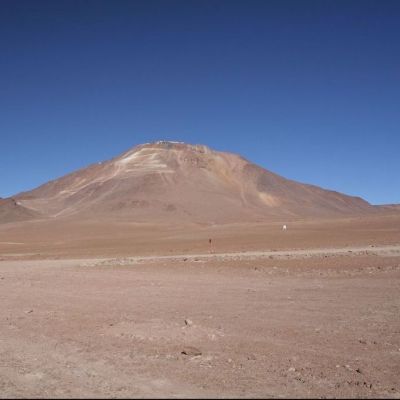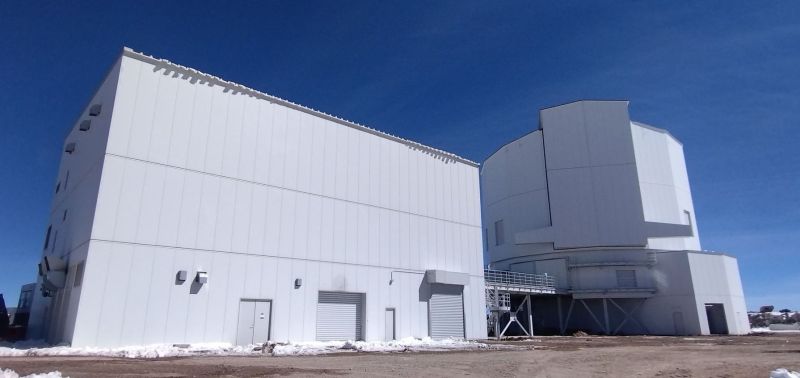
Although we have a gaggle of space telescopes floating around these days, there is still a lot of value in ground-based telescopes. These generally operate in the visible light spectrum, but infrared ground-based telescopes can also work on Earth, assuming that you put them somewhere high in an area where the atmosphere is short on infrared-radiation absorbing moisture. The newly opened Universe of Tokyo Atacama Observatory (TAO) with its 6.5 meter silver-coated primary mirror is therefore placed on the summit of Cerro Chajnantor at 5,640 meters, in the Atacama desert in Chile.
This puts it only a few kilometers away from the Atacama Large Millimeter Array (ALMA), but at a higher altitude by about 580 meters. As noted on the University of Tokyo project site (in Japanese), the project began in 1998, with a miniTAO 1 meter mirror version being constructed in 2009 to provide data for the 6.5 meter version. TAO features two instruments (SWIMS and MIMIZUKU), each with a specific mission profile, but both focused on deciphering the clues about the Universe’s early history, a task for which infrared is significantly more suitable due to redshift.

















Excellent place for a suntan and losing some wheight – moslty water, and it comes with a breathless view of the desert.
Did I mentioned the sushi place?
Jockes aside, I can’t wait for what will be discovered by this telescope. Any new way to look in the sky (bigger or new tech) is a path to understanding our universe and our little planet we called home. Now I’ll see myself out towards my local sushi place.
Just be careful of the armed bandits up there…
Near infrared astronomical photography works great at my urban sea-level back yard: the atmosphere is still plenty transparent well into the NIR. Around 700-900 nm monochrome CCD cameras are more sensitive than in visible light, there is MUCH less atmospheric light scattering, and most of the atrocious modern urban skyglow stays mercifully in the visible range. Other than H-alpha at 656 nm there’s not a whole lot of color variety though.
But the JWT is IR, so is this a bit too late or can it still do something useful?
Also: Isn’t gold better than silver for IR?
JWST is oversubscribed by a factor of 4-7, so there are plenty of scientists looking for time on an IR telescope. Whether this one fits their requirements is another question.
It would be interesting to see a comparison of the capabilities of this telescope, JWST, and other earthbound IR telescopes. I haven’t found that information on their website.